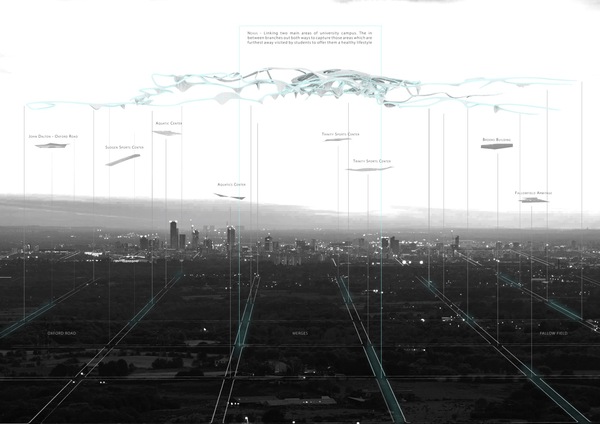NEXUS is a proposal that is designed along the theme of ”Zero Carbon Futures” and “Future Growth/Shrinkage” in relation to the wider urban systems. It was shaped through notions of Futures Thinking and Post Normal–ness by challenging static design methods and theories through the use of computational thinking with a complex scientific framework. This allowed the design to reflect future cities dealing with topics of climate change and urban morphology, resulting in a complex adaptive system.
The architectural form expressed through the organic nature of the structure provokes anatomical engagement in users as the various muscle fibers respond as exercise tracks to serve the wider community and student campus with an engaging sports facility. The undulating veins form the ceiling, walls, and floors of the building components to reflect the complexity of our human anatomy and encourage users to undertake different types of exercise.
Along the theme of “low-carbon futures”, the muscle structure is based on an evolutionary solver which uses a series of restricted parameters in order to achieve the values needed to obtain organic volumes of geometry. To create the optimised recycled concrete floor slab, a 3D printed formwork would act as the basis of constructing the ideal shape of these slabs to ensure the least amount of material used for the highest structural support.
I have focused my project on technical and computational design through the investigation of extensive modelmaking, giving me first-hand experience and exposure to the fabrication tools in the architectural industry. My design showcases an example of designing for the user, creating a tactile structure that seamlessly bridges the gap between interior and exterior to allow engagement with the external environment.


